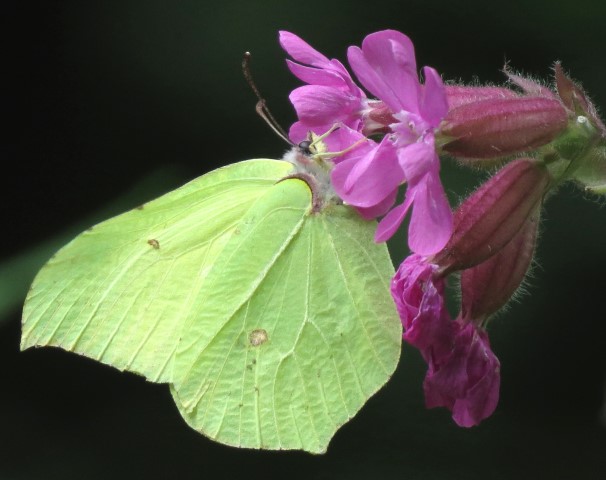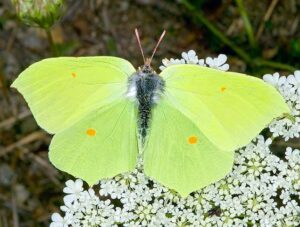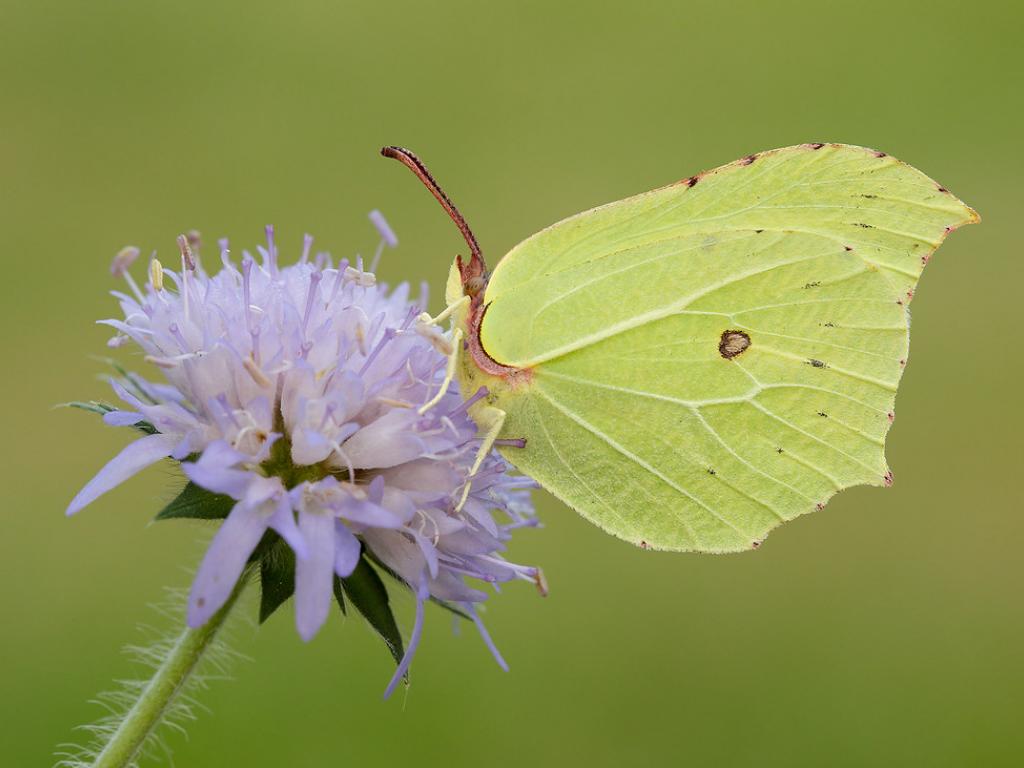
The Brimstone has spread in recent years, mainly in northern England. When this butterfly roosts among foliage, the angular shape and the strong veining of their wings closely resembles leaves.
There is a view that the word ‘butterfly’ originates from the yellow colour of male Brimstones. The wings of the female are very pale green, almost white, males have yellow-green underwings and yellow upperwings.
Size and Family
- Family: Whites and Yellows
- Size: Large
- Wing Span Range (male to female): 60mm
Conservation Status
- Butterfly Conservation Priority: Low
- Europan Status: Not threatened
- Fully protected under the Northern Ireland 1985 Wildlife Order
Caterpillar Foodplants
The larvae feed on leaves of Buckthorn (Rhamnus cathartica), which occurs mainly on calcareous soils, and Alder Buckthorn (Frangula alnus), which is found on moist acid soils and wetlands.
Lifecycle

Habitat
Occurs in scrubby grassland and woodland. The butterfly ranges widely and can often be seen flying along roadside verges and hedgerows.
Brimstone Gonepteryx rhamni
It is often a male brimstone fluttering past on a sunny day in late March which signals the real arrival of spring in a country garden. The brimstone overwinters as an adult and is therefore one of the first butterflies to emerge in spring. The male, being pure lemon yellow is very well known. The female is a very pale green and might, at first glance, be mistaken for one of the whites, which belong to the same family of butterflies: Pieridae. Like many species of Pieridae, the brimstone undertakes long journeys across the countryside in search of the very specific plants on which females lay their eggs and caterpillars grow to maturity.
Conservation status
The brimstone is a common species and, although its larval foodplants are restricted to relatively few habitats, the adult may be seen throughout the county, for example in gardens with Buddleias. Though most butterflies have declined in recent decades, the brimstone is not a species of immediate conservation concern.
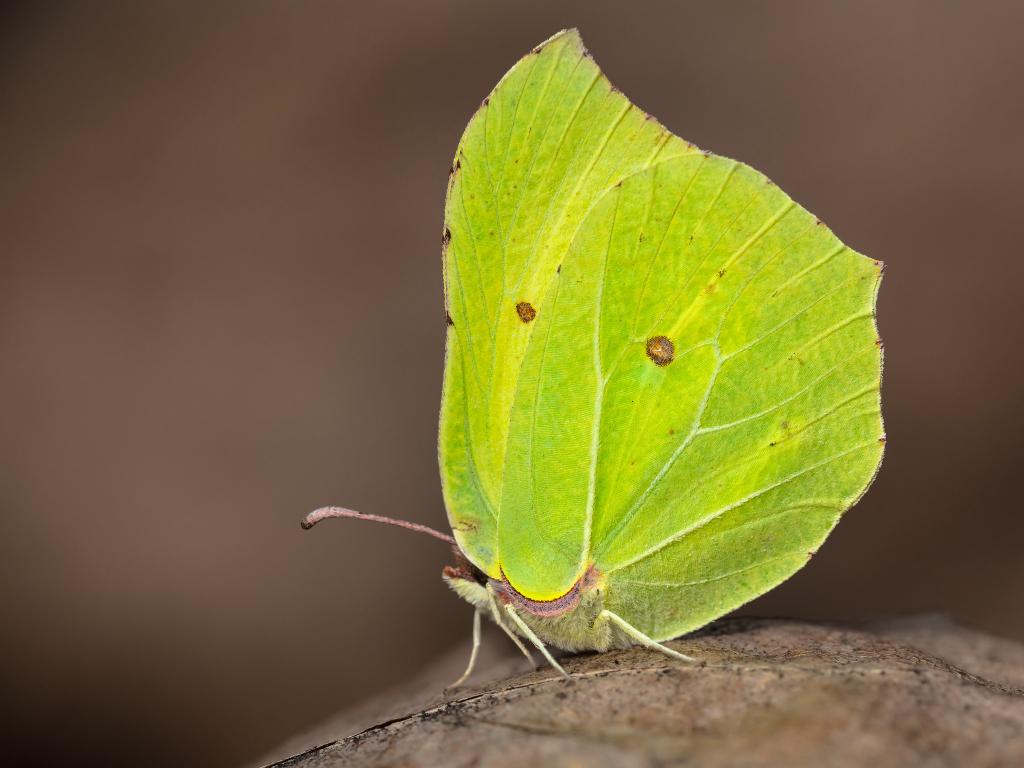
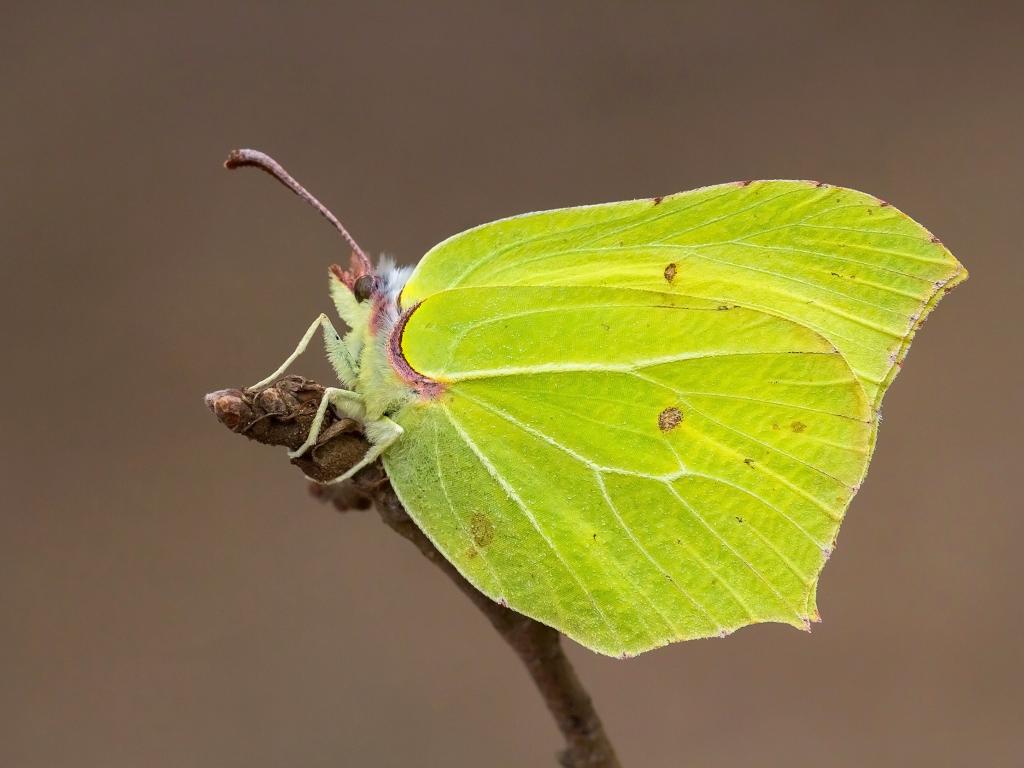
How rare is a brimstone butterfly?
Usually seen in ones or twos, they are never very common, but are widespread. They can be found in damp woodlands, along sunny, woodland rides and mature hedgerows, and in large gardens.
Why is it called a brimstone butterfly?
The brimstone is thought to be the original butterfly, named for the yellow colour of the male. Brimstone is an old name for sulphur, the colour which perfectly matches the male’s wings. The brimstone is sexually dimorphic, meaning males and females are different.
What are the predators of the brimstone butterfly?
Predators. Like most woodland Lepidoptera, G. rhamni is preyed upon by many species of birds and wasps.
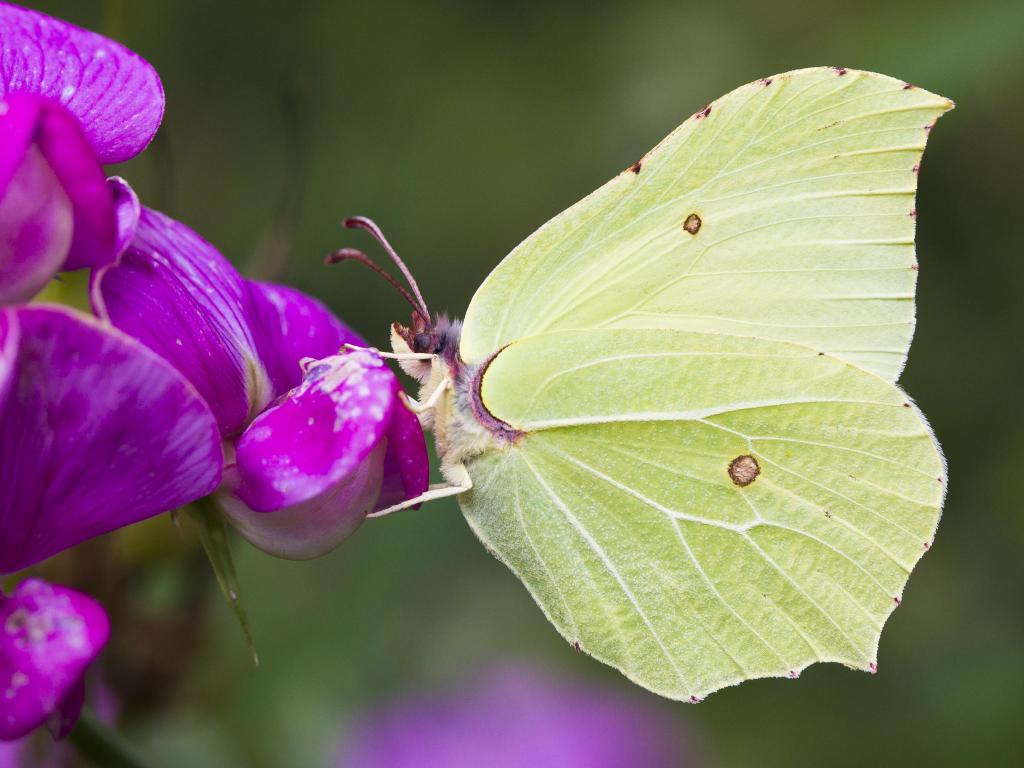
It is commonly believed that the word “butterfly” is a derived from “butter-coloured fly” which is attributed to the yellow of the male Brimstone butterfly, the female being a much paler whitish-green. The Brimstone has a most exquisite wing shape, perfectly matching a leaf when roosting overnight or hibernating within foliage. This is one of the few species that hibernates as an adult and, as such, spends the majority of its life as an adult butterfly. The distribution of this species closely follows that of the larval foodplant. In England, where it is represented by the subspecies rhamni, it can be found south of a line from Cheshire in the west to South-east Yorkshire in the east, although vagrants may turn up in other areas. In Ireland, where it is represented by the subspecies gravesi, its strongholds are in a small area that lies between the borders of West Galway, West Mayo and East Mayo, and a band running through central Ireland from Clare in the west to Kildare in the east.
Habitat
The Brimstone is a great wanderer and can be found in almost any habitat, from chalk downland to woodland rides to gardens.
Life Cycle
This single-brooded butterfly can be found in most months of the year, although peak flight times are in April and May as the hibernating adults emerge, and again in August when their offspring reach adulthood. Autumn is a good time to see this species as the adults are avid nectar-feeders as they build up their fat reserves in preparation for hibernation.
”On May 25th, 1907, at Thundersley, Essex, three females were captured and placed on three separate small plants of Rhamnus cartharticus [Rhamnus cathartica, Purging Buckthorn], but owing to the continuance of dull, cold weather they remained quiet for some days. On June 6th three eggs were deposited, and several others were laid during the following few days. The first laid hatched on June 16th, remaining in the egg state ten days. On June 23rd, 1907, a female captured at Hempstead Wood, Sussex, deposited a few eggs on June 30th, and many others on July ist and following days. On July 6th the eggs were counted, sixty-seven in all; about twenty of these were laid on the 5th, a few more were laid between the 8th and 14th, on which day she died. The eggs hatched, and the larvae became fully grown by the end of the first week in August. The first two pupated August 9th, the larval stage occupying about four weeks. The first pupae produced imagines on August 21st, remaining twelve days in the pupal state. All the others emerged by the end of the month. The period occupied by the complete metamorphosis, i.e., from the deposition of the egg to the emergence of the imago, is about fifty days. The life of the butterfly may extend over ten months of the year. Those emerging from the pupa in August may still remain on the wing the following summer, overlapping those of recent emergence. Therefore the Brimstone is the longest-lived of our British butterflies. The egg is laid singly, standing erect on the under surface of the young leaf, chiefly on the ribs, but occasionally on the stem of the young shoot close to the leaves.” – Frohawk (1924)

